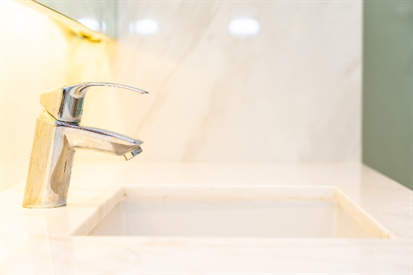How to Fix a Leaky Faucet: Expert Tips from Drain Pro Plumbing

Dealing with a leaky faucet can be both frustrating and costly if left unattended. Whether it's the annoying drip-drip sound or the unexpected spike in your water bill, understanding how to fix a leaky faucet is a skill every homeowner can benefit from.
Drain Pro Plumbing brings its expertise to help you navigate the tools, techniques, and common causes of faucet issues. In this guide, we'll cover everything you need to know, from identifying essential repair tools to diagnosing problems caused by worn-out washers and mineral deposits. You’ll also learn how to address low water pressure and understand when replacing a faucet becomes the best solution.
Dive into the sections below for expert-backed advice on how to tackle faucet leaks like a pro!
What Tools Do I Need To Repair a Faucet?
Repairing a faucet requires a set of basic tools that most homeowners can easily access. These include an adjustable wrench, a flathead screwdriver, a Phillips-head screwdriver, pliers, and a hex key or Allen wrench. For sealing components, Teflon tape is essential to ensure watertight connections during reassembly.
Specialized tools such as a basin wrench can help when working in tight spaces under the sink. Additionally, having a bucket and rags handy will help manage water spills during the repair process. A utility knife can also assist in removing old seals or gaskets.
Investing in a faucet repair kit specific to your faucet model can simplify the process. Many kits include replacement parts like O-rings, washers, and gaskets. With these tools in hand, tackling common faucet leaks becomes a straightforward task.
Can Worn-Out Washers Cause Faucet Leaks?
Worn-out washers are a common cause of faucet leaks, especially in compression faucets. These washers are designed to create a tight seal against the valve seat, preventing water from leaking out when the faucet is turned off. Over time, the washer can degrade, harden, or become misaligned due to regular use, leading to drips.
Replacing a washer is a relatively simple task. First, turn off the water supply and disassemble the faucet handle to access the valve stem. Remove the worn washer and replace it with one that matches the size and type required for your faucet. Ensure the new washer sits snugly to restore a proper seal.
Using high-quality washers and maintaining your faucet can significantly extend its lifespan. If leaks persist after replacing the washer, the valve seat may also require attention, as it could be corroded or damaged.
How Do I Fix a Faucet With Low Water Pressure?
Low water pressure in a faucet often indicates blockages in the aerator or supply lines. Start by unscrewing the aerator at the tip of the faucet spout. Check for debris or mineral buildup, which can restrict water flow. Clean the aerator thoroughly using vinegar and a soft brush before reinstalling it.
If cleaning the aerator doesn’t resolve the issue, inspect the supply lines for kinks or obstructions. Turn off the water supply and disconnect the lines to flush out any blockages. For faucets with cartridge mechanisms, mineral deposits inside the cartridge may also impede water flow. Replacing the cartridge can restore pressure.
Regular maintenance and descaling can prevent future water pressure issues. If persistent problems arise, it may be time to consult a professional plumber to assess the plumbing system for larger issues.
Can Mineral Deposits Cause Leaks in Faucets?
Mineral deposits, also known as limescale, can cause faucet leaks by interfering with the internal components. These deposits often build up around the valve seat, O-rings, and seals, preventing them from forming a tight seal. Hard water is a common culprit behind these issues.
To address leaks caused by mineral deposits, disassemble the faucet and soak affected components in a solution of white vinegar and water. This helps dissolve the limescale and restore functionality. For stubborn deposits, a gentle scrub with a soft brush may be necessary.
Installing a water softener or using faucet filters can help prevent mineral buildup in the long term. Routine cleaning of faucet components ensures optimal performance and minimizes the risk of leaks due to deposits.
When Is It Time To Replace a Leaky Faucet?
Replacing a leaky faucet becomes necessary when repairs are no longer effective or cost-efficient. Frequent leaks, corrosion, and extensive wear are indicators that a faucet has reached the end of its lifespan. Outdated faucets may also lack water-efficient features, making replacement an environmentally and financially sound decision.
If the faucet’s internal components are severely damaged or replacement parts are no longer available, replacement is the best option. Consider upgrading to a modern faucet with improved durability and features like touchless operation or water-saving technology.
Consulting a professional plumber can help ensure the new faucet is installed correctly and matches your plumbing system. Drain Pro Plumbing offers expert advice and services for faucet replacement. Visit our Request Service page or call us at 952-469-6999 to schedule an appointment today!